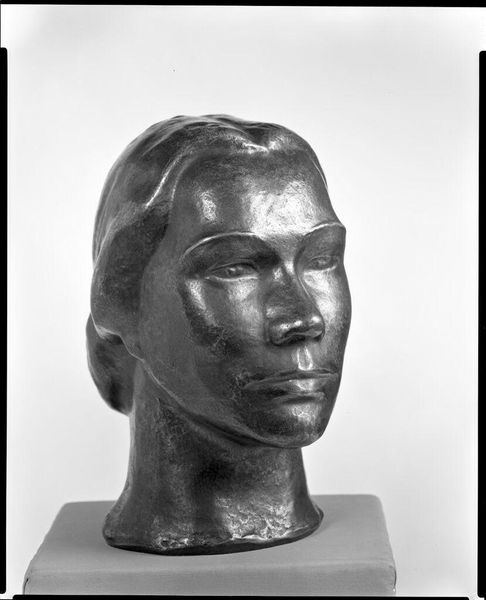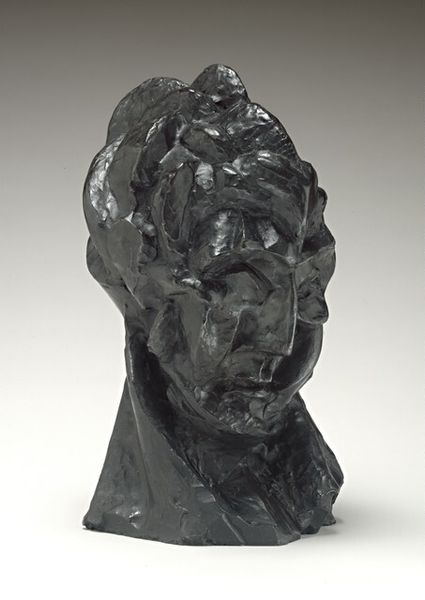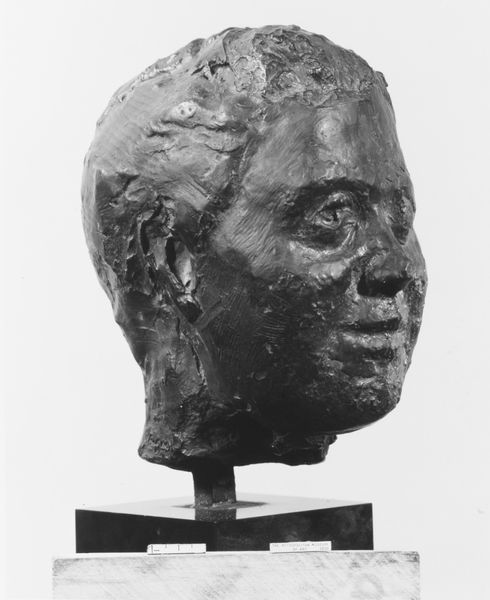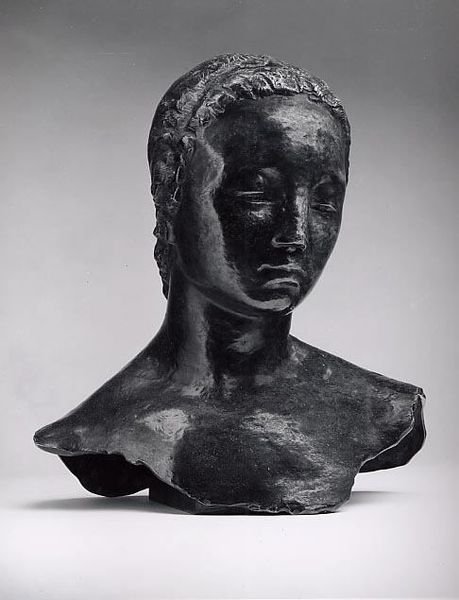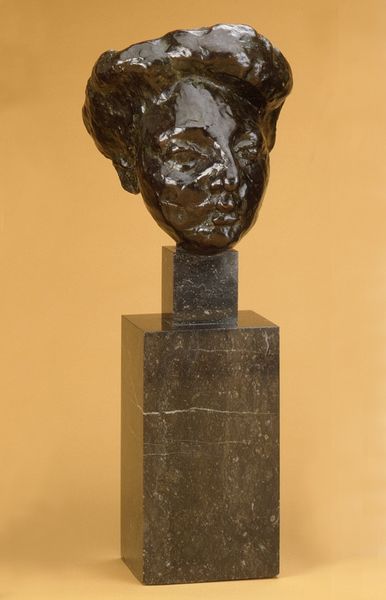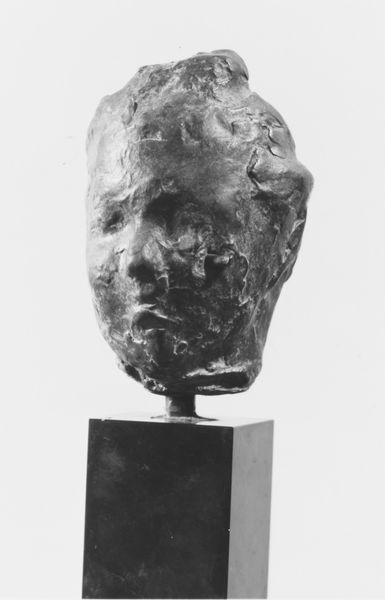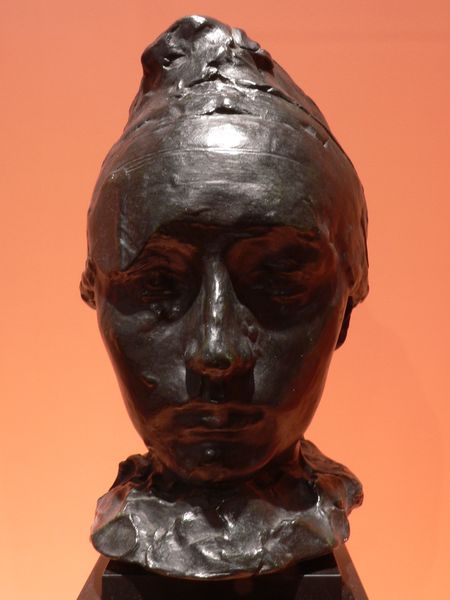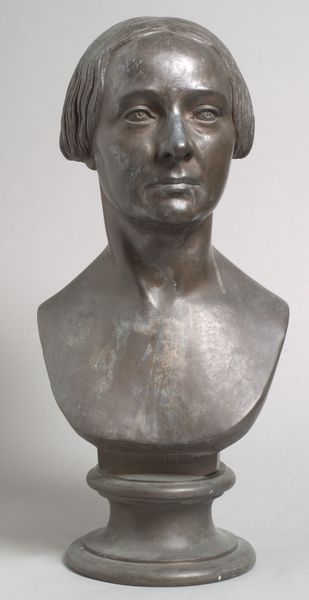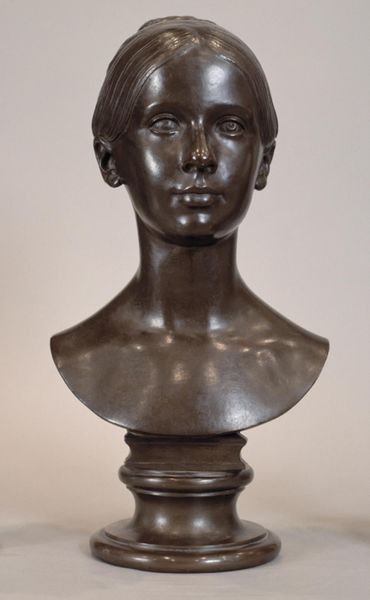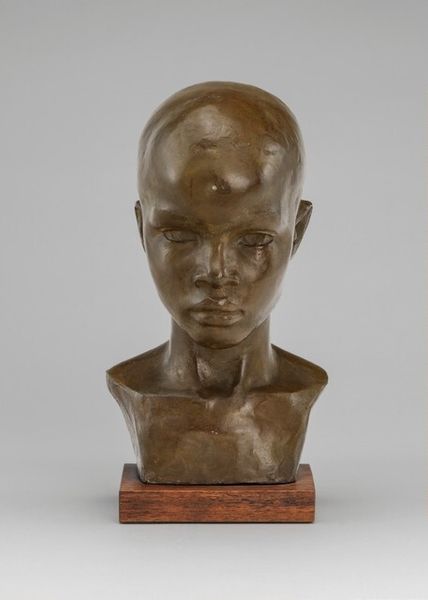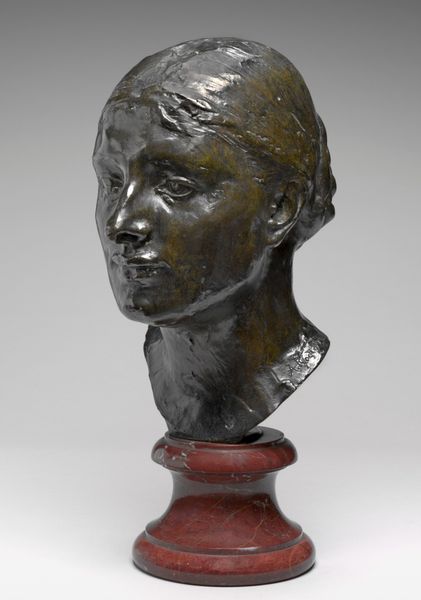
metal, bronze, sculpture
#
portrait
#
metal
#
sculpture
#
bronze
#
sculpture
#
modernism
#
realism
#
statue
Dimensions: image: 21.6 x 15.5 cm (8 1/2 x 6 1/8 in.) sheet: 24.3 x 17.8 cm (9 9/16 x 7 in.)
Copyright: National Gallery of Art: CC0 1.0
Curator: Let's discuss the sculpture here before us, Richard Benson’s rendering of the "Robert Gould Shaw Memorial," cast in bronze sometime between 1973 and 2008. Editor: The first impression is striking; the figure's downward gaze imparts such gravity and inward contemplation. Curator: Indeed. It evokes introspection, especially when considering the historical narrative connected with Shaw, a white Union officer who led the first all-Black regiment, the 54th Massachusetts Volunteer Infantry, during the Civil War. Benson's focus brings questions of race and heroism to the forefront. It challenges viewers to interrogate historical power dynamics and reimagine these pivotal narratives from diverse perspectives. Editor: The bronze, typically associated with commemoration and authority, also acts as a mediator for exploring difficult historical terrain. Do you see visual symbols referencing ideals, memory, and maybe even sacrifice? Curator: Absolutely, although it is subtle. The subject's lowered gaze and somewhat soft features signify something different than you would usually expect in memorial sculptures. It doesn’t evoke the typical iconography of triumphant military leadership, instead hinting at a degree of internal conflict or quiet resolve. Editor: It has that quality. Also, his almost blank expression could point to larger universal feelings of weariness, and quiet hope. As you pointed out, there's an important intersectional component at play when one thinks about Shaw within the context of civil war leadership roles, and the men who served with and under him. The visual language suggests empathy—it’s not necessarily celebrating conquest. Curator: Precisely. Its aesthetic leans into Realism, yes, yet with the sensitive subject matter and subdued modern approach, we get the impression of psychological depth, far beyond mere physical likeness. This sculptural choice fosters reflection, pushing us beyond simplistic notions of heroism. Benson invites us to grapple with themes of systemic inequality, military sacrifice, and collective liberation. Editor: This examination through bronze reminds me of visual rhetoric found across cultural memories. These symbols continue influencing narratives of heroism today. Curator: Exactly, so Benson uses this iconic medium in a way to foster more inclusive and nuanced historical interpretations. Editor: Food for thought, definitely prompting conversations beyond established cultural and political confines. Curator: And that dialogue, hopefully, encourages future explorations into narratives less explored or forgotten within the broader scope of art and history.
Comments
No comments
Be the first to comment and join the conversation on the ultimate creative platform.
